Welcome to the Tobacco Control Implementation Hub resource library
Use the search bar or filters to find guides, sample materials, research articles and more to facilitate tobacco control policy implementation.
Search Global Implementation Publications
Information Filters
- clear all filters
-
Policy area
-
Implementation area
-
Resource type
-
Region
-
Source
Search for your resources:
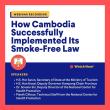
Webinar - Tobacco Control Law Implementation: How Cambodia Successfully Implemented Its Smoke-Free Law
Author: Vital Strategies
Watch this webinar, featuring high-level members of Cambodia's government, to learn more about how the country successfully implemented its smoke-free law. Speakers share examples from their work to implement policies for tobacco smoke-free cities, along with the successes, challenges and lessons learned.

Association Between Secondhand Smoke Exposure Among Women and the Implementation of Tobacco Control Measures on Campus
Author: Nian et al (2024)
Exposure to secondhand smoke (SHS) among women is prevalent in China which increases their risk of developing a wide range of diseases and can affect their susceptibility to adverse reproductive health effects. This study aims to examine the association between SHS exposure among women and the adoption and implementation of tobacco control measures on campus in China.

WEBINAR - TOBACCO CONTROL LAW IMPLEMENTATION: CITY-LEVEL INITIATIVES TO IMPROVE COMPLIANCE AND PROTECT THE PUBLIC FROM THE HARMS OF TOBACCO
Author: Vital Strategies
Watch this webinar in which city leaders share their experiences implementing smoke-free laws, bans on tobacco advertising, promotion and sponsorship (TAPS) at points of sale, and tobacco vendor licensing policies. Speakers share examples from their work to implement policies for tobacco smoke-free cities, along with the successes, challenges and lessons learned.

Examples of Smokefree Tobacco Control Campaigns in Vietnam
Author: Vital Strategies
Three examples of education campaigns in Vietnam focusing on the health harms of smoking around others in public places and restaurants, smoking tobacco in the workplace, and the penalties applicable for people who smoke on public transport.

Examples of Tobacco Control Law Educational Ads in Bangladesh
Author: Vital Strategies
Two examples of educational campaign ads that ran in Bangladesh to inform the public of existing laws prohibiting smoking in public places, tobacco advertisements, promotion and sponsorship (TAPS) and sale of tobacco to and by minors.

Evaluation of Tobacco Free Film and Television Policy in India
Author: Vital Strategies
This study was conducted to gauge the extent of implementation of the tobacco free film rule in India, to identify patterns in compliance and violations, and to identify opportunities for strengthening the rule.

Tobacco retailer density and tobacco retailers near schools in two cities of East India, Ranchi and Siliguri
Author: Pouranik et al. (2021)
This study assesses the number and density of tobacco vendors in the cities of Ranchi (Jharkhand) and Siliguri (West Bengal), and the number of retailers selling tobacco near schools. Both of these jurisdictions have passed local tobacco vendor licensing laws.

Article 5.3 implementation in Uganda and the challenge of whole-of-government accountability
Author: Male et al (2022)
This analysis focuses on understanding difficulties in managing industry engagement across government ministries and in developing effective whole-of government accountability for tobacco control.

Compliance with smoke-free policies at indoor and outdoor public places: an observational study in Pakistan
Author: Ahsan et al. (2022)
Study investigating smoke-free compliance across public places in Karachi, the most populous city in Pakistan.

Dhuann Smokefree Ad Campaign
Author: Vital Strategies
Smokefree ad from India depicting the dangers of secondhand smoke and sharing information on the smoking ban in public places. Adaptions from Turkey and Bangladesh and the press release materials from each ad.

Campaign Beacon - Tobacco Control Strategic Communications
Author: Vital Strategies
Campaign Beacon is an online resource from Vital Strategies of tested and proven, best practice media campaign materials designed to support tobacco control health objectives.
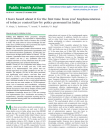
Implementation of tobacco control law by police personnel in India
Author: Ahuja et al. (2018)
Implementation of tobacco control law by police personnel in India. This study aimed to assess knowledge and attitudes.

Global progress in tobacco control: the question of policy compliance
Author: Anderson et al. (2020)
This study aims to describe and compare global trends in legislation and compliance of smokefree and TAPS policies between 2009 and 2019.
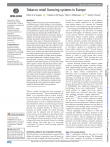
Tobacco retail licensing systems in Europe
Author: Kuipers et al. (2021)
This paper aims to stimulate a discussion on the potential for tobacco retail licencing in Europe and examines the cases of Finland, Hungary, France, Italy and Spain.

Evaluating the impact and equity of a tobacco-free pharmacy law on retailer density in New York City neighbourhoods
Author: Giovenco et al. (2018)
This study models the reduction in tobacco retailer density following the ban to examine differences in the policy’s impact across neighbourhoods.

Tobacco Atlas 6th edition and Companion Website
Author: Drope et al.
The sixth edition of Tobacco atlas and its companion website provide comprehensive guidance on tobacco control issues and tools used to counter them. Use the Tobacco Atlas to explore key issues and solutions and the companion website to search for country specific information.

British Columbia 100% Smokefree: Successful Campaign Despite Industry Opposition
Author: Drope & Glantz (2003)
This article describes how the British Columbia Capital Regional District systematically organized an educational campaign, enacted and enforced a series of bylaws, exposed industry interference to successfully pass and implement a 100% smokefree bylaw in all public places.
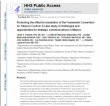
Case Study: Effective Translation of the Framework Convention in Mexico
Author: Thrasher et al. (2008)
This case study describes the impact of the sociocultural and political-economic context of Mexico on WHO-FCTC policy uptake. It examines advancing tobacco control policy through strategic, contextually-specific communication efforts and uses smokefree policy to illustrate barriers to compliance in the Mexican context.

Community Perception of Smokefree Policy in Depok City, Indonesia
Author: Rahmayanti et al. (2019)
This study analyzes the perception of smokefree policy within a university community service program and finds that while many people are aware of smoking's harmful effects, they do not know about smokefree policies, highlighting the need for community education, effective communication, and engagement.

Assessment of EU Member State National Characteristics and Their Association with Smoking Prevalence
Author: Bogdanovica et al. (2011)
This study aims to assess public sector corruption and other national characteristics and it's potential association with higher smoking prevalence in EU member states.
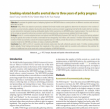
Evaluation of Smoking-related Deaths Averted Due to Three Years of Policy Progress, 2013
Author: Levy et al. (2013)
This study aims to determine the number of smoking-attributable deaths were averted due to the implementation of MPOWER policies.
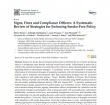
Review of Compliance Strategies for Enforcing SF policy
Author: Wynne et al. (2018)
Comprehensive literature review to provide evidence for effective enforcement strategies and suggest measures to improve policy compliance.

Seven years of progress in tobacco control: an evaluation of the effect of nations meeting the highest level MPOWER measures between 2007 and 2014
Author: Levy et al. (2018)
This study aims to evaluated the global progress of the six MPOWER measures and their impact across 88 countries that have adopted one or more measure from 2007 to 2014.

Retailer licensing and tobacco display compliance, Australia
Author: Fry et al. (2016)
This study aims to assess vendor licensing compliance and scheme to explore variations in compliance among different retailer types and locations.
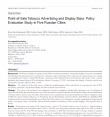
POS Tobacco Advertising and Display Bans in 5 Russian Cities
Author: Kennedy et al. (2017)
This study aims to evaluate the implementation of national TAPS law in kiosks across five Russian cities.
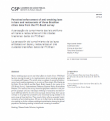
Perceived Enforcement of Smokefree in Brazil
Author: Mendes et al. (2017)
The aim of this study is to evaluate the perceived enforcement of anti-smoking legislation on 4 Brazilian cities.
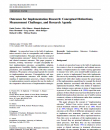
Outcomes for Implementation Research: Conceptual Distinctions, Measurement Challenges, and Research Agenda
Author: Proctor et al. (2010)
This paper proposes a general working taxonomic of eight implementation elements to measure implementation outcomes, advance implementation processes, and improve effectiveness of implementation strategies.

Mixed-methods Evaluation TAPS ban in Banyuwangi, Indonesia
Author: Sebayang et al. (2019)
This policy evaluation reviews the outdoor tobacco advertisement ban in Banyuqangi District East Java, Indonesia.

Indicators to Measure Success of Smoke-free Policies
Author: Niskar et al. (2008)
This article assess indictors of smokefree policy implementation in the Unites States, New Zealand, and Israel to demonstrate successful compliance of smokefree policies.
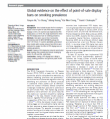
Evidence on the Effect of POS Display Bans on Smoking Prevalence
Author: He et al. (2018)
This study evaluates the effect of point-of-sale display bans globally as of 2016.

Compliance Evaluation of San Francisco's Flavoured Tobacco Sales Prohibition
Author: Vyas et al. (2021)
This research assesses compliance with San Francisco's 2018 flavored tobacco sales ban and concludes that retailer education prior to enforcement will result in higher compliance rates.

Evaluation of Compliance to Gutka Ban & Other Provisions of COTPA India
Author: Pimple et al. (2014)
This article uses a random sampling process to evaluate compliance with the COPTA legislation in India.

Compliance Surveys: Smokefree compliance tools in India
Author: Lal et al. (2011)
This article demonstrates how smokefree compliance can be assessed through simple and cost-effective survey tools and can be used to validate implementation and enforcement progress.
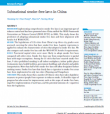
China Subnational Smokefree Law Predictors
Author: Lin et al. (2019)
This study analyzes the predictors of adopting subnational smokefree laws since China ratified the WHO FCTC in 2005 and assess their alignment with article 8.
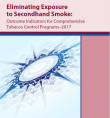
CDC Indicators for Eliminating Exposure to Secondhand Smoke, 2017
Author: US CDC
This report is the third in the CDC's publications on Evaluating Comprehensive Tobacco Control Programs and provides an evaluation logic model and set out outcome indicators that address eliminating exposure to secondhand smoke.

Implementing smoke-free policies in low- and middle-income countries: A brief review and research agenda
Author: Byron et al. (2019)
A review and research agenda on the challenges of implementing smokefree policies in low- and middle-income countries, identifying five areas where progress is urgently needed.

Explaining Mechanisms that Influence Smoke-free Implementation at the Local Level
Author: Mlinarić et al. (2019)
Study that analyzes existing smokefree evidence and translates it into recommendations to improve smokefree implementation in outdoor venues.

Vector of the Tobacco Epidemic Tobacco Industry Practices in LMICs
Author: Lee et al. (2012)
This article reviews published research on tobacco industry activities that interfere with tobacco control policies and encourage tobacco use in LMICs to more thoroughly understand industry practices and strategies in LMICs.
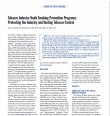
Tobacco Industry Youth Smoking Prevention Programs: Protecting the Industry and Hurting Tobacco Control
Author: Landman et al. (2002)
This article analyzes tobacco industry documents to determine why industry-sponsored youth smoking prevention programs were developed, how they were used to fight tobacco control policy and programming, and their lack of effect on youth smoking prevalence.

The ‘‘We Card’’ Program: Tobacco Industry ‘‘Youth Smoking Prevention’’ as Industry Self-Preservation
Author: Apollonio et al. (2008)
This article analyzes the tobacco industry self-regulation "We Card" program. It exposes "We Card" as ineffective and structured to improve the industry's public image and limit tobacco control policies and their enforcement.
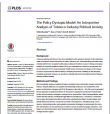
Policy Dystopia Model Interpretive Analysis of TI Political Activity
Author: Ulucaniar et al. (2016)
This article outlines a model that provides an evidence-based summary of corporate political strategies used by the tobacco industry. The model enables public health practitioners to anticipate these strategies and develop realistic assessments of the industry’s claims.

Exposing and Addressing Tobacco Industry Conduct in LMICs
Author: Gilmore et al. (2015)
This article explores the tobacco industry's practices in low and middle-income countries (LMICs), given the industry's growing interest, investment, and interference in these regions. It focuses on how exposing the industry's misconduct is necessary for both the implementation of the WHO FCTC and more 'endgame' solutions to the tobacco epidemic.

The Economic Impact of Clean Indoor Air Laws
Author: Eriksen & Chaloupka (2007)
This article reviews and analyses the diffusion of clean indoor air laws and the economic and public health impacts of their implementation. While research sponsored by the tobacco industry has raised concerns regarding the economic impact of smoke-free laws, scientific evidence indicates that clean indoor air laws are low-cost, safe, and effective.

STOP Crooked 9: Nine ways the Tobacco Industry Undermines Health Policy
Author: STOP
The Crooked Nine report outlines the tobacco industry's strategies, techniques, and tactics to undermine tobacco control using case studies from around the world. It is designed to help the tobacco control community predict the industry's actions and counter industry interference.

Case Study: PMI Involvement in Smoking Cessation
Author: McDaniel et al. (2017)
This article is a case study ion Philip Morris' involvement in the cessation arena and an evaluation of how and why PM supports cessation programs. It illustrates a notable example of industry interference that undermines effective tobacco control.
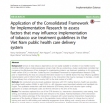
Assessment of Factors that Influence Implementation of Tobacco Use Treatment Viet Nam
Author: VanDevanter et al. (2017)
Application of the Consolidated Framework for Implementation Research (CFIR) to assess factors that may influence implementation of tobacco use treatment guidelines in the Viet Nam public health care delivery system.
